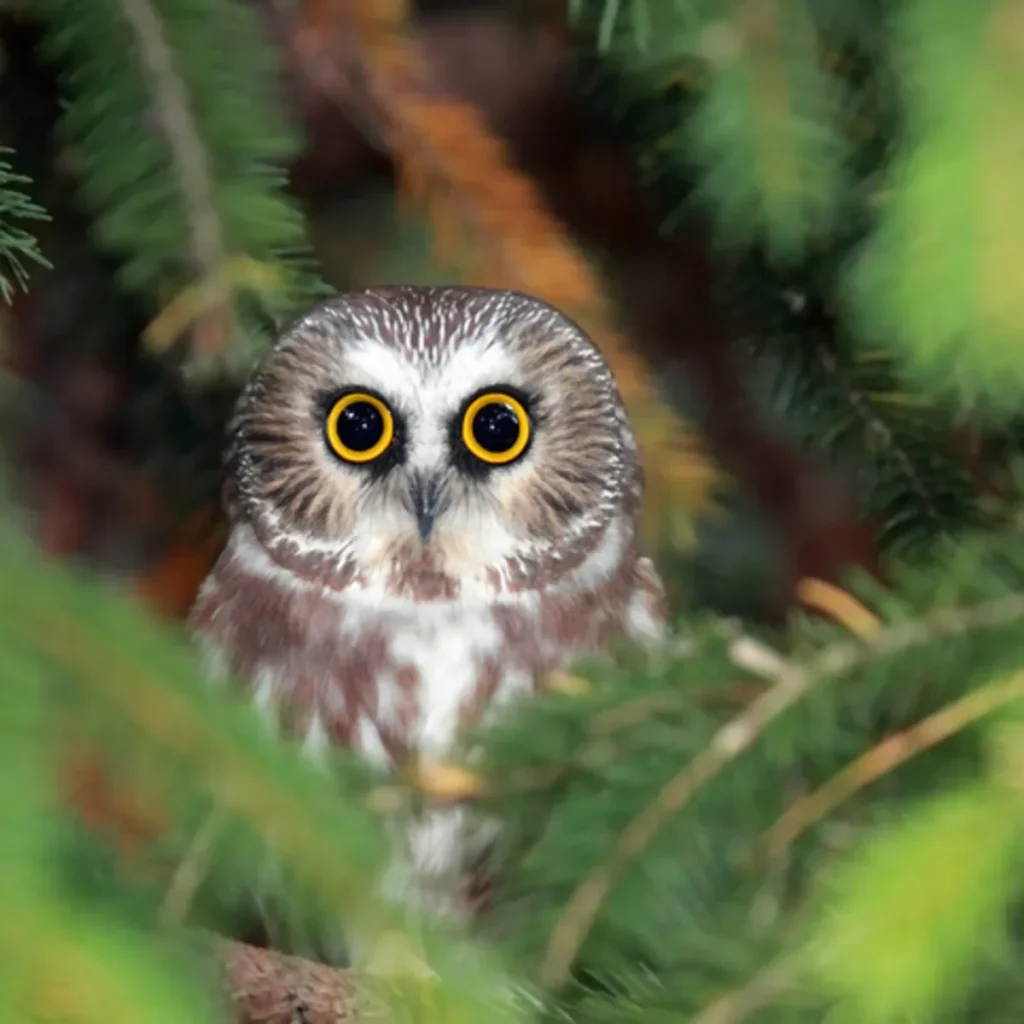Is It Legal to Eat Owls? The Truth About Wildlife Protection Laws You Need to Know
No, it is not legal to eat owl in the United States. The Migratory Bird Treaty Act of 1918 made owl consumption illegal, protecting all owl species found in North America. Here’s what you need to know right now:
• The Migratory Bird Treaty Act makes it unlawful to pursue, hunt, take, capture, kill, or sell nearly 1,100 species of migratory birds, including most owls • You can’t even possess an owl feather without a special permit for scientific research or a native religious ceremony • Penalties range from $15,000 to $250,000 in fines plus six months to two years in jail • All 19 owl species found in the United States are federally protected • State laws add additional protections and penalties on top of federal regulations
Let me explain exactly why eating owl is illegal, what happens if you violate these laws, and why these protections exist.
The Federal Law That Protects Every Owl
In the early 1800s, owl meat was widely consumed in the United States before the animal became a protected species. That changed dramatically in 1918.
The Migratory Bird Treaty Act prohibits the take (including killing, capturing, selling, trading, and transport) of protected migratory bird species without prior authorization by the Department of Interior U.S. Fish and Wildlife Service.
Here’s what the law covers:
Prohibited Actions: • Hunting or killing owls • Capturing or possessing owls (dead or alive) • Selling or purchasing owl parts • Transporting owls across state lines • Even possessing owl feathers, eggs, or nests
Why This Matters: The act was signed by the United States and Canada in 1918 for the purpose of ending the commercial trade in feathers, when bird species were under intense hunting pressure.
What Are the Penalties for Eating Owl?
The consequences for violating owl protection laws are severe and can include both federal and state penalties.
Federal Penalties:
Under the MBTA, fines can reach $15,000, and prison sentences can go up to six months. However, penalties escalate based on the violation:
• Single violations: $15,000 to $250,000 in fines • Jail time: Six months to two years depending on the specific action • Endangered Species Act violations can incur civil penalties up to $25,000, while criminal convictions may result in fines up to $50,000 and/or one year imprisonment
Real-World Enforcement:
In California, a person faced a $6,000 fine and three months in prison for illegally hunting an owl. A group in Europe was fined $20,000 for attempting to smuggle owl feathers.

Every Owl Species Is Protected—No Exceptions
There are at least 19 species of owls in North America, and every single one is protected under federal law.
Common Protected Owl Species:
• Great Horned Owl • Barn Owl • Barred Owl • Snowy Owl • Spotted Owl (also listed as threatened) • Eastern and Western Screech-Owl • Burrowing Owl • Northern Saw-whet Owl • Short-eared Owl • Long-eared Owl • Great Gray Owl • Boreal Owl • Flammulated Owl • Northern Pygmy-Owl • Elf Owl • Ferruginous Pygmy-Owl (also endangered) • Northern Hawk-Owl • Whiskered Screech-Owl
Although only some owls are migratory, all species are protected under the act, including the birds, eggs, and nests.
Why You Can’t Even Keep an Owl Feather
The Migratory Bird Treaty Act protects all birds native to North America, including their feathers, eggs and nests.
The reason feathers are protected is because it’s impossible to tell, by looking at a feather, whether it was picked up off the ground or if it was plucked from a bird that was killed specifically for its feathers.
This means:
• Finding a feather on the ground doesn’t make it legal to possess • It doesn’t matter if you found it dead—you will still receive a citation and fine should a wildlife official find you in possession of an owl or feather • Only educational facilities with special permits or Native Americans for religious ceremonies can possess owl feathers.
State-by-State Protection: Even Stricter Rules
Federal law provides baseline protection, but states often add their own regulations.
Examples of State Protections:
Michigan considers barn owls endangered and offers them an added level of state-specific protection with restrictions on habitat disturbance and stricter penalties for violations.
In North Carolina, all owl species are protected by federal and state law, making it illegal to kill, injure, or harass native owls. It is also illegal to harm or destroy active owl nests with eggs and/or nestlings present, and possession of live native owls or any of their parts requires both state and federal permits.
State penalties typically include:
• Fines ranging from hundreds to thousands of dollars • Community service requirements • Potential jail time • Permanent revocation of hunting licenses
When Owls Were Legal: A Brief History
In the early 1800s, Charles Darwin was a member of the Glutton Club at Cambridge University, a student group with a mission to eat birds and animals not normally consumed by humans, including owl.
Ornithologist John James Audubon’s writings in “Birds of America” from the first half of the 1800s reported that owls were used in some gumbo recipes in Louisiana. The Creole people in Louisiana in the 1700s were known to include the meat of barred owls in their cuisine.
The 1867 book The Market Assistant cataloged a jaw-dropping 120 species of birds sold in New York, Boston, and Philadelphia markets.
Why The Law Changed:
The overhunting of birds for food and the feather trade pushed many species toward extinction, prompting Congress to act. The passenger pigeon’s sudden extinction provided impetus to the growing conservation movement.
Are There Any Legal Exceptions or Permits?
Limited exceptions exist through specific permitting processes that are highly regulated and typically issued for activities such as scientific research, educational display, or wildlife rehabilitation.
Who Can Legally Handle Owls:
• Licensed wildlife rehabilitators • Scientific researchers with federal permits • Educational institutions with special permits • Native Americans for religious ceremonies • Zoos and wildlife facilities with proper authorization
Important: These permits do NOT authorize consumption. They’re strictly for conservation, education, and cultural purposes.
Only licensed raptor rehabilitators can take in and care for orphaned or injured birds of prey, including owls, hawks, falcons, eagles, and vultures.

What If You Find a Dead Owl?
Even if you discover a deceased owl, you cannot legally possess it or any of its parts.
What to Do:
- Report concerns to the U.S. Fish and Wildlife Service Office of Law Enforcement
- Contact state wildlife agencies for local incidents
- Provide specific details: location, date, time, and circumstances
- Do not touch, move, or take any parts of the bird
If you feel a problem situation involving an owl justifies physical removal, contact the U.S. Department of Agriculture-Wildlife Services to learn about federal depredation permit options.
Why Owls Are Protected: The Ecological Reason
Beyond the legal reasons, there are compelling ecological justifications for owl protection.
Owls as Pest Controllers:
Barn owls act as natural pest controllers, eating rodents that can damage crops and farm structures. By preying on rodents and insects, owls help regulate populations that might otherwise cause significant damage to crops and trees, reducing the need for chemical pest control.
Conservation Status:
The northern spotted owl has 1,200 pairs in Oregon, 560 pairs in northern California and 500 pairs in the state of Washington. There are fewer than 50 pygmy owls in the United States.
Many owl species face significant threats, including habitat loss, the widespread use of pesticides and rodenticides, and the impacts of climate change, leading to several species being classified as vulnerable, endangered, or critically endangered globally.
Frequently Asked Questions
Q: Can I eat owl meat if it’s farm-raised?
No. There are no legal owl farms in the United States, and the MBTA prohibits possession and consumption regardless of how the bird was obtained.
Q: What if I’m from a culture that traditionally eats owl?
While some indigenous cultures may have had limited or ritualistic uses for owl parts, this was not a prevalent practice for sustenance. Current U.S. law makes no general cultural exceptions for owl consumption, though Native Americans may possess feathers for religious ceremonies with proper permits.
Q: Is owl meat even safe to eat?
The flavor is described as being similar to chicken but with stronger, slightly gamey notes, with meat that is chewy and tough. Owls ravenously feed on moles, shrews, rats, and would often delve into carrions, making their dietetic contents noxious. Health risks aside, it’s illegal.
Q: What about owl eggs?
Harassing or interfering with owl nests, including the removal of eggs, can result in significant fines and penalties. Eggs are fully protected under the MBTA.
Q: How do wildlife officials enforce these laws?
The U.S. Fish and Wildlife Service Office of Law Enforcement conducts investigations when violations are reported. Conservation officers actively patrol areas and respond to tips from the public.
Q: Are any birds legal to hunt and eat?
Many groups of hunted or game birds, including ducks, geese, doves, and many shorebirds are subject to limited protection and can be hunted in season. Birds that are considered non-native species, like the House Sparrow and European Starling, are not protected under the MBTA.
What to Do If You Witness Owl Violations
If you suspect someone is illegally hunting, possessing, or consuming owls:
Federal Reporting: • U.S. Fish and Wildlife Service Office of Law Enforcement • Provide location, date, time, and detailed descriptions • Note any vehicles, license plates, or identifying information
State Reporting: • Contact your state wildlife agency • Many states have anonymous tip hotlines • Report habitat destruction or nest disturbance
Remember: The U.S. Fish and Wildlife Service is a key federal agency responsible for investigating wildlife crimes.
The Bottom Line on Owl Consumption Laws
Key Takeaways:
- Eating owl is federally illegal under the Migratory Bird Treaty Act of 1918
- All 19 owl species in the United States are protected—no exceptions
- Penalties include fines up to $250,000 and prison time up to two years
- You can’t even possess owl feathers, eggs, or nests without special permits
- State laws often add additional protections and harsher penalties
- Limited permits exist only for scientific research, education, and wildlife rehabilitation—never for consumption
- Owls play crucial ecological roles as natural pest controllers
The statute makes it unlawful without a waiver to pursue, hunt, take, capture, kill, or sell nearly 1,100 species of birds, and does not discriminate between live or dead birds.
If you’re curious about wildlife, appreciate owls from a distance and support conservation efforts that protect these magnificent birds for future generations.
Official Resources: • U.S. Fish and Wildlife Service – Migratory Bird Treaty Act • Code of Federal Regulations – Protected Bird List • Your state wildlife agency for local regulations.
About the Author

Sarah Klein, JD, is a licensed attorney and legal content strategist with over 12 years of experience across civil, criminal, family, and regulatory law. At All About Lawyer, she covers a wide range of legal topics — from high-profile lawsuits and courtroom stories to state traffic laws and everyday legal questions — all with a focus on accuracy, clarity, and public understanding.
Her writing blends real legal insight with plain-English explanations, helping readers stay informed and legally aware.
Read more about Sarah
